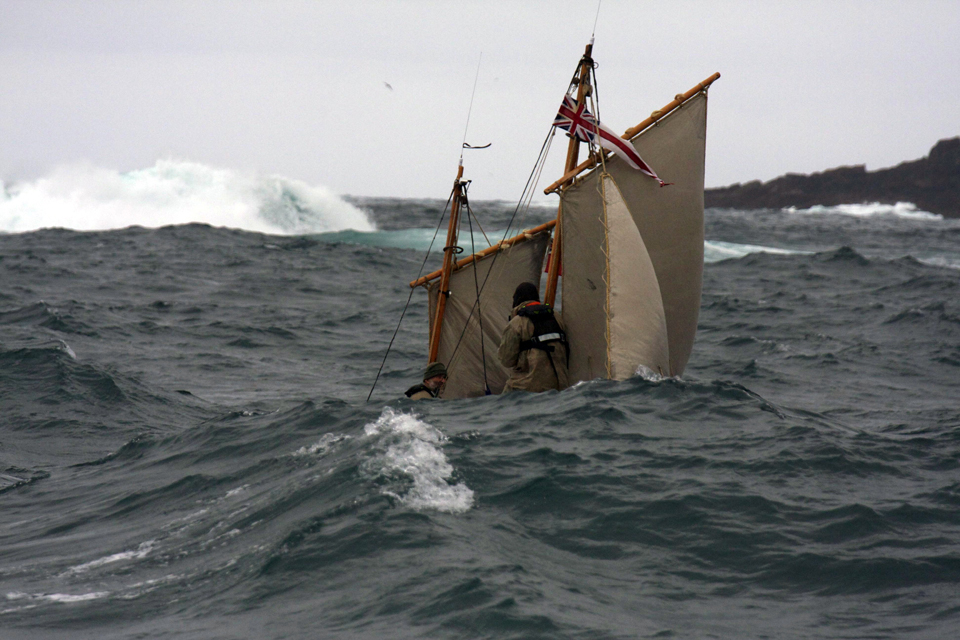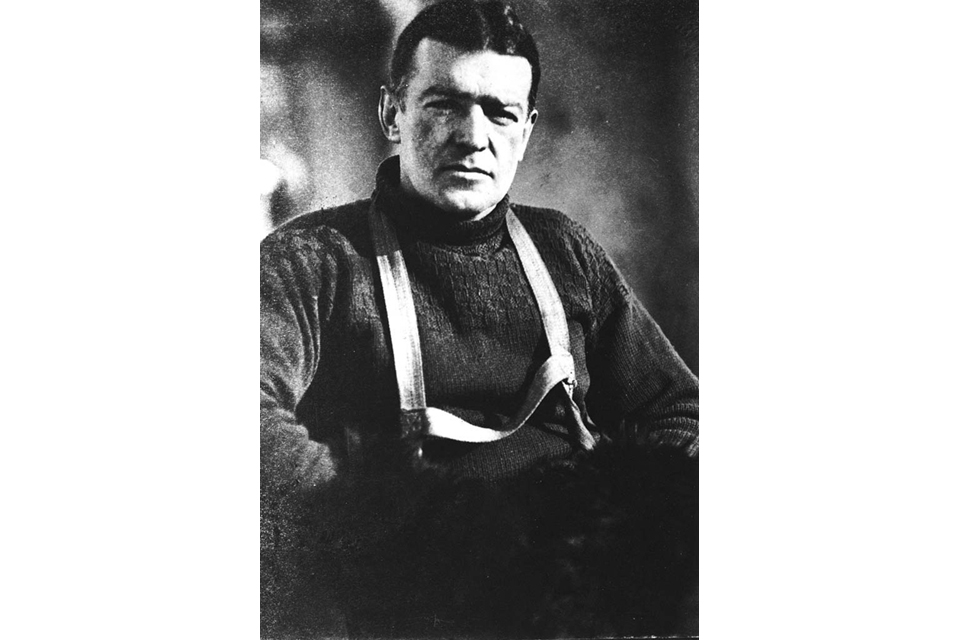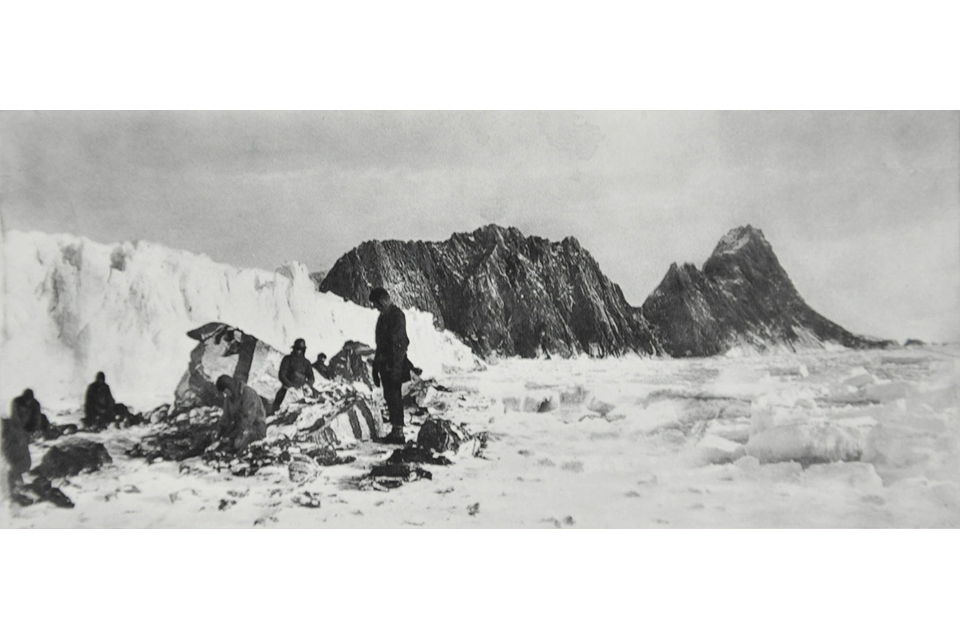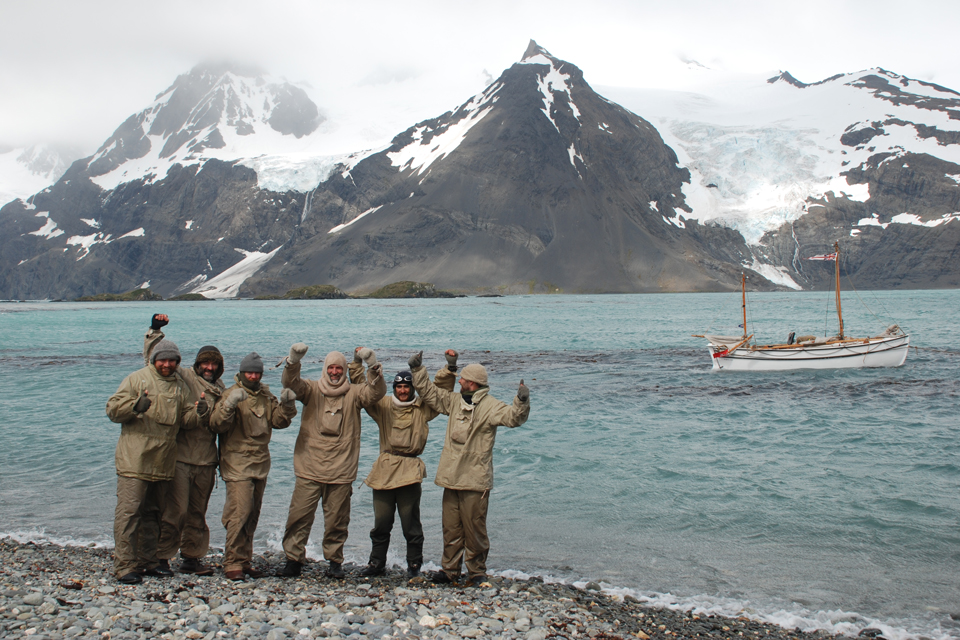Naval duo recreate Shackleton rescue
A Royal Marine and a Petty Officer were part of the first team to successfully recreate the famous Antarctic explorer's 1916 rescue mission.
![Warrant Officer Class 2 Baz Gray and Petty Officer Seb Coulthard at Point Wild, Elephant Island [Picture: via Navy News]](https://assets.publishing.service.gov.uk/media/5a617cec40f0b60abc671eb2/s300_20130424shack05.jpg)
Warrant Officer Class 2 Baz Gray and Petty Officer Seb Coulthard at Point Wild, Elephant Island
Using the same equipment as Sir Ernest Shackleton’s party did a century ago, the pair – Royal Marines commando Warrant Officer Class 2 (WO2) Baz Gray and Petty Officer (PO) Seb Coulthard of 815 Naval Air Squadron – were part of a 6-strong team who sailed from the edge of Antarctica to South Georgia, to cross the island’s mountains; the first men to complete the full journey since Shackleton himself.
In 1916, Sir Ernest took his whaler, the James Caird, from Elephant Island to South Georgia and struggled across the mountains to raise the alarm when his trans-Antarctic expedition became stranded after its ship, the Endurance, was crushed by the ice.
In the 97 years since, no one has successfully recreated the entire rescue mission, until now.

Waves crash over the Alexandra - replica of the James Caird - as the expedition team sails for South Georgia [Picture: via Navy News]
To keep their recreation of the original mission as authentic as possible, the 2013 team used only the clothing and equipment available to Shackleton’s men, sailing across 800 miles of violent ocean before crossing 20 miles of rugged South Georgia to reach the former whaling station at Stromness.
A replica of the James Caird was built and named in honour of the 2013 expedition patron, Shackleton’s granddaughter Alexandra, then, after nearly 5 years of planning, transported to Elephant Island.
From there, expedition leader Tim Jarvis, skipper Nick Bubb, navigator Paul Larsen, cameraman Ed Wardle, with WO2 Gray as the seasoned mountaineer, and PO Coulthard as bosun, set out through large chunks of ice and made it to open water.
Space inside the boat was no larger than a double bed with around 3 feet for headroom – no one could move around on board without disturbing one of his shipmates, which meant, for the entire journey to South Georgia, the sailors got no more than an hour’s sleep at a time.

Sir Ernest Shackleton (library image) [Picture: via Navy News]
Food was cooked on a restored 100-year-old primus stove, which then had a large pot placed on top of it – but in rough seas cooking was almost impossible.
Waves crashed over the side of the boat which meant the men’s woollen clothing was always ‘nice and damp’, according to WO2 Gray.
After 13 days at sea, the adventurers reached King Haakon Bay and landed at Peggotty Bluff on the north-west shore of South Georgia - just like the explorers of 1916.
From there, Shackleton’s party faced a 20-mile trek across the central spine of the island… but they didn’t have WO2 Gray to guide them.
Only he and Tim Jarvis were to make the journey to Stromness – site of a now-abandoned whaling station – with clothing and equipment consisting of woollen clothes, old leather boots (with screws driven through the soles for grip on the ice), a thin windproof outer layer, 50 metres of old manila rope, and a prismatic compass.

Shackleton's party on Elephant Island in 1916 (library image) [Picture: via Navy News]
They faced glaciers and slopes prone to avalanches, and a high risk of falling into crevasses – which meant the climbers were roped together all the time. WO2 Gray said:
It was an amazing feeling to be so remote with such little equipment – we genuinely were able to take ourselves back, to see exactly what they saw, feeling not too dissimilar.
After a pretty much non-stop, 24-hour slog we pulled our very tired bodies into a very emotional Stromness harbour and were now the first team to do both parts of the historic survival journey – and as close as we could to the manner in which [Shackleton’s party] did it.

The 6 members of the 2013 Shackleton Epic expedition at King Haakon Bay, South Georgia [Picture: via Navy News]
The Shackleton Epic expedition ended, fittingly, in Grytviken, the island’s capital, where the modern-day adventurers stood at the grave of Sir Ernest and toasted his memory in the presence of his granddaughter.
A documentary of the expedition is due to be shown in September with a book charting the 6 men’s exploits to be published around the same time.